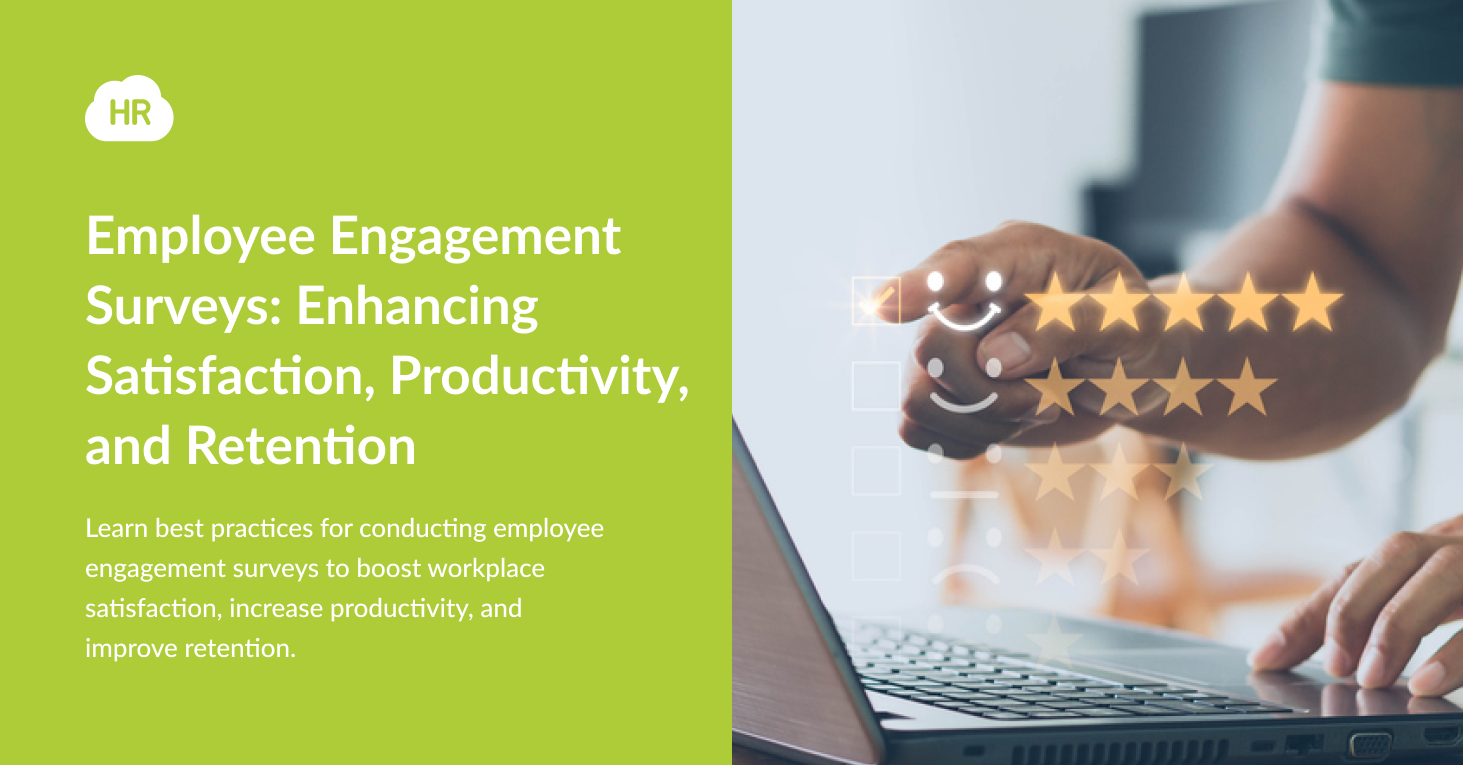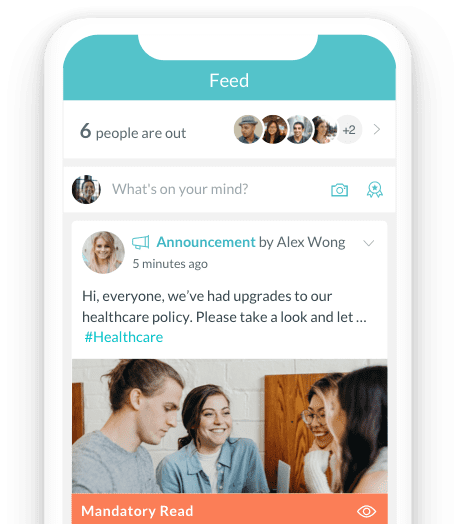Employee Engagement Surveys: Enhancing Satisfaction, Productivity, and Retention

Employee engagement is vitally important in virtually every industry today. But it can be the critical difference between success and failure in retail, hospitality, healthcare, and other sectors where customer service is so important and where high turnover is a real problem.
Higher employee engagement isn’t just tied to retention. Highly engaged employees are more productive, more able to help the company increase its profitability, and contribute to a more positive work environment. According to a recent Gallup research report, companies with more engaged workforces experience 81% lower absenteeism rates along with a 21% increase in profitability as compared to those with low engagement levels.
Yet many companies don’t know enough about employee engagement. More specifically, many aren’t aware of many of the many factors that have a direct impact on engagement. Examples of these include:
-
Onboarding processes to help new hires hit the ground running
-
The employee’s role and responsibilities
-
The company culture and overall work environment
-
Clear processes and expectations
-
Flexible schedules and/or a focus on work-life balance
-
Career advancement opportunities
-
Clear and equitable compensation policies
-
Leadership and management
Chances are good that many companies have a limited awareness of these influences, but they may not know how to address them to increase employee engagement. Yet even then, companies may not know how to fully measure ongoing engagement levels on an ongoing basis. As a result, they’re missing a real opportunity to engage employees and then maintain the right levels to achieve their specific metrics – turnover, productivity, or other business goals.
Yet there is a way to accomplish all of this: Employee surveys and polls.
The Value of Employee Surveys
Why are employee surveys so effective? The first answer is that they can help you get the right information from employees so you can understand where you stand with employee engagement levels today and start to identify new areas for improvement.
You can create custom surveys to collect important insights and details from your employees, including their concerns, aspirations, ideas, or opinions. When reviewing the total number of responses, you can begin to uncover larger trends – positive or negative – or identify potential issues, such as excessive job dissatisfaction that could lead to too much turnover.
As the old saying suggests, “knowledge is power,” but with employee engagement, you need to have the right information in order to act and drive meaningful change throughout the organization. Employee polls and surveys make all of this possible by giving you an extremely effective way to gain valuable insights into employees’ perceptions and then make the right plan to improve.
What Surveys Should You Use? How Often Should You Use Them?
The answer to both questions is “it depends” based on your specific goals and requirements. Clearly, there are many different types of polls and surveys you can create, especially with the right employee communications solution. You want to build your surveys to get the information you need, but also make sure you’re not overwhelming employees with so many touches that they eventually tune out.
The following are samples of common types of surveys as well as suggestions for when they can be used.
-
Onboarding: Why not start your relationship with new hires on their first day? Onboarding surveys give you the chance to learn more about your hiring and onboarding processes, employees’ expectations, and areas where things could be better. This sets the stage for future touchpoints to collect even more information and sends the message that your company values their feedback.
-
Pulse surveys: You can also touch base with employees on a regular basis, such as monthly or quarterly pulse surveys and polls. These may be the right frequency and can be helpful in collecting ongoing feedback, tracking progress and aligning engagement with larger initiatives, and giving employees the chance to weigh in.
-
Annual polls and surveys: These can be larger check-ins and are often more appropriate to look back at the last year as well as the opportunity of the year ahead. These surveys can include requests for information related to your company’s performance against stated goals, recommendations for management, or where employees think the company should go.
-
Exit surveys: Finally, when employees leave your company this can be an extremely effective way to collect clear – and often very direct – feedback.
Obviously, there are other options for the timing of polls and surveys. You can consider them after a certain event occurs, such as a major company change, or even before or after employees’ annual performance reviews. All of this may help you take advantage of times when employee engagement could dip so you can proactively identify any potential issues before they become larger problems.
Best Practices for Writing Survey Questions and Analyzing Survey Results
When it comes to crafting your questions and thinking about administering the survey, you should consider a few proven best practices. Make sure you use clear and concise wording to avoid any confusion.
You should also do your best to avoid the use of any leading questions or other phrasing that could unintentionally “force” an employee to respond in a way they may not intend. Finally, make sure your questions are relevant to employee engagement. In other words, don’t try to kill two birds with one stone by forcing other questions – for example, those related to open enrollment – into your engagement survey.
Then as the results begin to come in, attempt to group data by categories to begin to identify trends and patterns. Do your best to differentiate between extra “noise” and actual valuable insights your survey generated. As you begin to understand what you heard and where you think your company should go to enhance employee engagement, do your best to communicate all of this with your employees.
Linking Surveys to Employee Engagement
It’s in your best interest to do all you can to drive employee satisfaction and engagement to the highest possible levels. Yet without the right information related to how employees feel, you may be in the dark about what will really motivate them and how you can take the right steps. Through the use of employee surveys, polls, and other communications, you can learn what is needed and put it into action to increase employee engagement and achieve the best results.
FAQs
1. What is the best frequency for conducting employee surveys?
The short, and possibly vague, answer is “It depends.” The ideal frequency may depend on your company’s specific goals and the exact information you’re looking to collect related to employee engagement. Many companies attempt to find the right balance between trying to get too much information without overwhelming their employees.
2. How can I encourage employees to participate in our engagement surveys?
First, make sure that you are clearly communicating the value of their feedback, the fact that their responses will be anonymous, the reasons why you’re attempting to get this information, and how their input will lead to results they care about.
3. What should I do if the survey responses are concerning?
While this is something you are hoping to avoid, chances are good that it will happen. Address the underlying issues as quickly as possible and look to further engage employees in the process to better understand their issues or concerns and your action plan to hopefully resolve them.
4. How can I ensure that changes made post-survey are effective?
Measure, measure, measure. Make sure you create clear metrics to track the impact of any new changes. You should also do all you can to continue to communicate with the entire workforce to collect more feedback related to your proposed plan and show how you’re attempting to address their concerns.
5. Are there examples of specific best practices for analyzing survey data?
Best practices to analyze survey data include segmenting responses by various demographic factors (such as department, role, or tenure) to identify trends and opportunities for improvement. Many companies benefit from visual data, or the use of charts, graphs, and other reports that can clearly summarize where things stand – and where you need to go.

Discover How Workmates Simplifies
Employee Surveys for Real-Time Insights

Author Bio:
This article is written by a marketing team member at HR Cloud. HR Cloud is a leading provider of proven HR solutions, including recruiting, onboarding, employee communications & engagement, and rewards & recognition. Our user-friendly software increases employee productivity, delivers time and cost savings, and minimizes compliance risk.
Keep Reading
Balancing Technology and the Human Touch in Employee Engagement
Companies are taking employee engagement very seriously because it is one of the ways of
Building Strong Teams: The Power of Team Bonding Exercises
Never overestimate the power of collaboration as a core element of effective team
